We've collected useful information for you!
Get more information by using our solution

[VAT instructions]
■ Definition of VAT
VAT in China is a tax levied on value added commodities. As one of the most important taxes levied by the Chinese government, it is the same as value-added tax (VAT - Value Added Tax) of other countries. VAT should belong to domestic taxes, and consumption tax by nature. That is, VAT is applicable taxes levied on consumption regions.
VAT as a turnover tax, its levied way is almost the same with other countries. Calculated and levied by the value added during the processing of flow.
Suppliers or enterprises of taxable goods become taxpayers. However, in practice value added of commodity during production and circulation process is difficult to accurately calculate, so China widely has used international tax deduction way to levy taxes. First, according to sales volume of commodity, it regulates tax rate to calculate the required amount of output tax, and deducts obtained VAT of services which is amount of input tax, its balance is payable value added tax. This calculation reflects the tax according to the principles of value-added factor.
■ Characteristics of Chinese VAT
ㅇ Higher rate compared with other countries (South Korea 10%, Japan 5%)
ㅇ Non-unified tax rate: according to the import commodity, rate can be 16%, 10%, 3%, 0% and so on.
ㅇ During export, in many cases purchase tax imbalance may happen because the inconsistency of paid VAT and export tax rebate rate.
※ VAT rate of China
Tax rate | Corresponding items |
16% | Applicable to goods excluded from tax rate of 0%, 3%, 10% |
10% | Some animals and plants and their products belong to chapter 01~15 Some animal and plant products and mechanical products belong to chapter 21, 23, 25, 27, 31, 38, 39, 41, 43, 44, 49, 51, 52, 82, 84, 85, 87 |
3% | Some chemical or pharmaceutical products belong to chapter 28, 29, 30, 35 |
0% | Some articles belong to chapter 12, 13, 23, 26, 30, 39, 40, 71, 74, 87, 90, 98 |
■ Tax exemption and simplified taxation
In China, a certain range of products are exempted from VAT or it’s implementing simplified taxation for a sales volume less than a certain amount.
☉ Exemption scope and tax relief items
ㅇSelf-produced agricultural products sold by agricultural producer
ㅇContraceptive medicines and devices
ㅇAncient books
ㅇImported equipment directly for scientific research, scientific experiments and teaching
ㅇImported equipment and materials donated by foreign governments and international organizations
ㅇImported equipment for processing with supplied materials, assembly and compensation trade
ㅇSpecial products for disabled people imported directly by disabled organizations
ㅇSales of used items
ㅇPersonal sales volume less than the calculation point of taxation
☉ Simplified taxation system
In order to simplify the management of value-added services, Chinese government levies 4% or 6% VAT for taxpayer with sales volume less than a certain amount (small-scaled taxpayer), which is simple taxation system.
■ Payment period
ㅇVAT payment periods are 1 day, 3 days, 5 days, 10 days, 15 days, a month or a quarter, etc. from the date on which payment responsibility is generated. The taxpayer's specific tax period is approved by the competent tax authorities according to the amount of the tax payable.
ㅇIf taxation objects are imported goods, taxpayer should pay appropriate taxes within 7 days since the date of issuing tax certificate by customs.
■ Calculation of VAT
China widely has used international tax deduction way to levy taxes. First, according to sales volume of commodity, it regulates tax rate to calculate the required amount of output tax, and deducts obtained VAT of services which is amount of input tax, its balance is payable value added tax. This calculation reflects the tax according to the principles of value-added factor.
Example) the corresponding VAT is 16%, enterprise A sells the products to enterprise B for 100 Yuan, B re-sells the products to C for 300 Yuan.
For above situation, B purchases products from A should pay for 16 Yuan for VAT (100 x 16% = 16 Yuan); C purchases products from B should pay for 48 Yuan for VAT (300 x 16% =48 Yuan).
Therefore, according to the tax deduction method, enterprise B should pay for 34 Yuan to the State. (48 Yuan - 16 Yuan =32 Yuan).
■ Import, Export and VAT
☉ Import and VAT
VAT for the imported goods is the duty-paid price multiplied by value-added tax rate. Taxpayer should pay appropriate taxes within 7 days since the date of issuing tax certificate by customs.
ㅇCalculation formula for imported VAT
Duty-paid price (CIF price + tariff + consumption tax) x VAT rate
☉ Export and VAT
Export goods in China shall be applicable for all VAT rate of 0%.(Based on the principle of taxation at consumption regions).
■ VAT rebate
☉ General case
The actual value-added tax to be paid is the amount after tax deductions, so if purchase price is higher than VAT which should be paid, appropriate tax rebate should be received.
☉ Export tax rebate (output tax rebate)
ㅇIn China, the VAT rate of export goods is 0%, and paid VAT tax rebate is available as purchasing exported goods.
ㅇAt this point, most countries have adopted full VAT tax rebate as purchasing exported goods, but China will rebate the corresponding taxes. This is different from other countries, which more attention should be paid.
ㅇAccording to HS Code (Harmonized code), China developed the export tax rebate rate, which is generally lower than the VAT rate, therefore in many cases the exporter cannot get the full VAT. The exporter should pay for the difference of this part. (Simply speaking, if specific enterprises purchase commodities with VAT rate of 16%, its export tax rebate rate is 13% and enterprises should pay 3% of difference. Therefore, the lower the export tax rebate rate, the more VAT amount should be paid).
ㅇFor example, VAT rate of the guitar (HS 9202900090) is 16%, while the export tax rebate rate is 13%. During export of guitar, the exporter paid VAT rate of 16% in the previous but obtained 13% of actual export tax rebate. Therefore, the exporters must eventually pay for the VAT of 3%.
ㅇChina's export tax rebate rate is developed by the State Council, and its tax rate changes with the national policy. China's export tax rebate rate now shows a downward trend, so enterprises will have to pay more VAT tax.
ㅇCalculation of export tax rebate
Amount of tax rebate: export goods FOB price X tax rebate rate
The actual tax paid: FOB price X (VAT rate of taxation goods - export rebate rate)
☉ Beneficiaries of the export tax rebate
In principle, with certain conditions, the ultimate exporter involved in the transaction will receive the export tax rebate. Please refer to the "Export tax rebate instructions” for detailed information.

